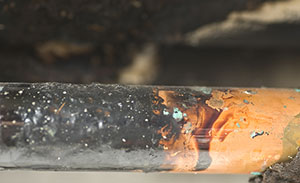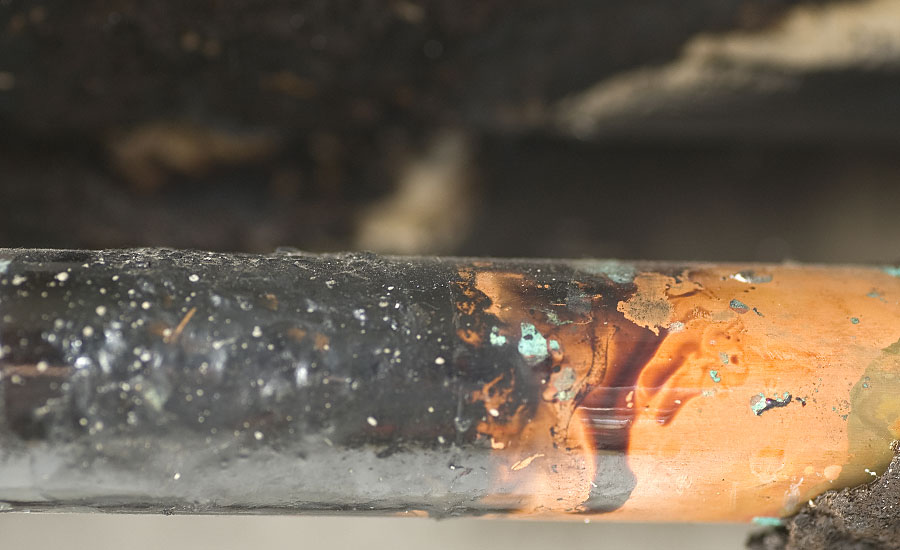On a recent call to replace an aging gas boiler, the owners reported a persistent gas smell. The gas company had previously inspected the building and couldn’t find a gas leak using their detectors.
Yet the smell continued. The point is, if you smell gas, however subtle the smell, there is a gas leak. Somewhere. The challenge can indeed be where to find it.

|
| During each short cycle of the boiler, the chimney would stay wet and drip water. Those drips fell onto the basement rim joists, found a 1-inch steel gas pipe, and the pipe started to rust and leak gas. |
Built in 1923, this building was serviced by an older gravity boiler that had evidence of back drafting. It also had an exposed chimney in poor condition, a tile roof, rotting windows, scant insulation, and little or no air sealing.
Why was the chimney in such bad shape? Each time the boiler cycled on and stayed on for a long period, the chimney would dry out. But during each short cycle of the boiler, the chimney would stay wet and drip water. For decades. And those drips fell onto the basement rim joists and essentially provided a steady pool of stagnant water around a 1-inch steel gas pipe. So the pipe started to rust ... and leak gas.
The company’s gas bills spiked last summer. Workers thought sealing the rim joists would help cut down the bills. Someone stuffed fiberglass insulation in the rim joists along the tight quarters of the old stone basement wall. This batt insulation also hid the horizontal gas pipe that connected the old boiler to the outside meter.
However, stuffing fiberglass insulation doesn’t solve condensation problems. The water drips continued. They didn’t caulk properly in the rim joist cavity, nor shine a light on the gas pipe in the dark, dank space. If they had, they would have noticed the rusty pipe and noticed the ongoing dampness.
On my call to replace the boiler, after taking apart a portion of the sealed rim joists, I uncovered the rusty pipe. My detector indicated more than 20 pinpoints of gas leaks over 24 inches of pipe.
If the workers would have simply observed the condition of the pipe, and tested it with a simple gas detection tool prior to covering the rim joists, the problem would have been found immediately. Rust isn't good for anything, particularly pipes that carry combustion fuels.
I replaced the pipe, resealed the rim joists properly, and re-inspected every inch of the gas line and pipe.
Problem solved.
Publication date: 6/8/2015
Want more HVAC industry news and information? Join The NEWS on Facebook, Twitter, and LinkedIn today!


Report Abusive Comment